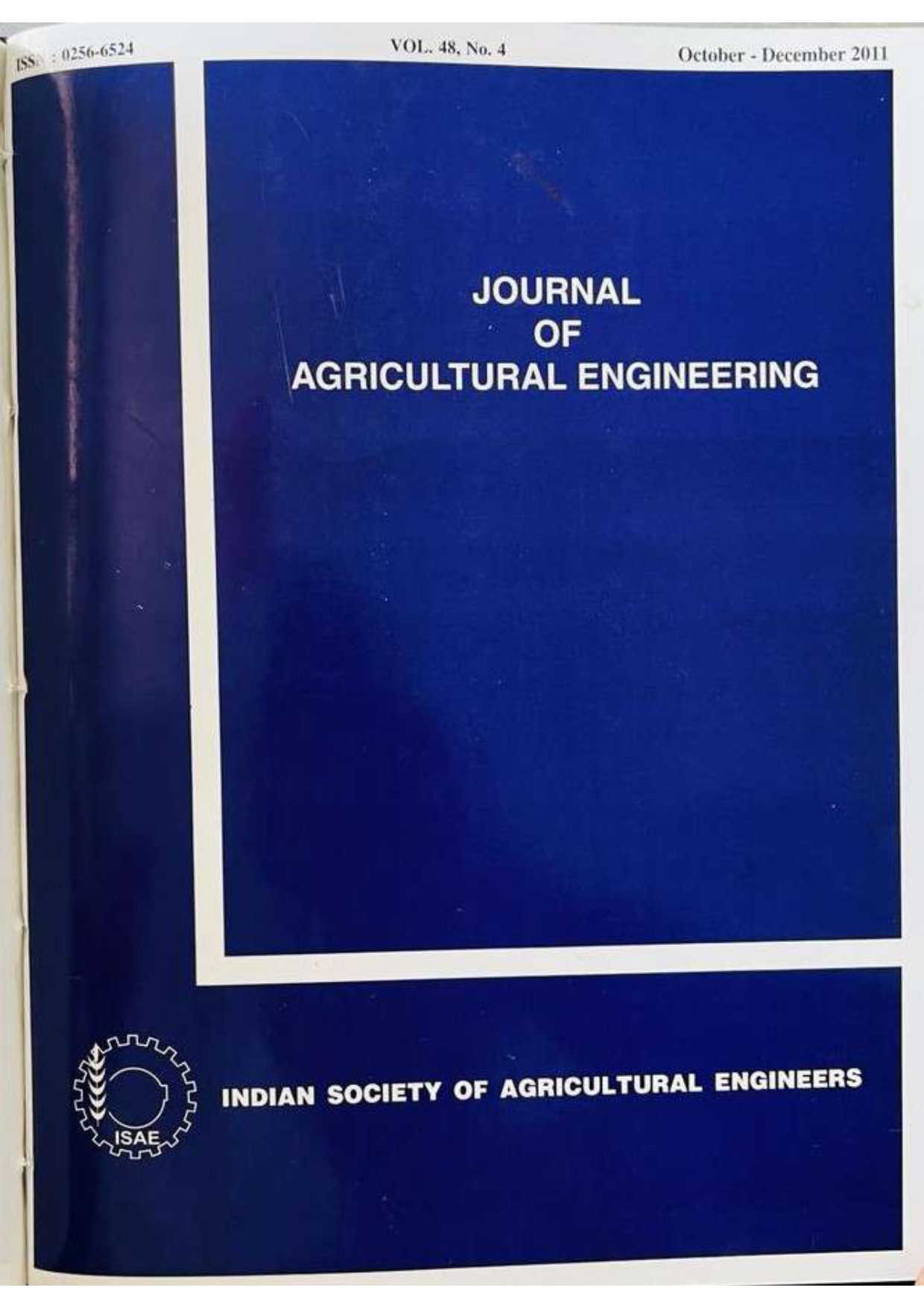Thermal and Storage Characteristics of Biomass Briquettes with Organic Binders
DOI:
https://doi.org/10.52151/jae2011484.1459Keywords:
Biomass briquette, storage period, thermal characteristics, tumbling resistance, shattering resistance, water penetration resistanceAbstract
The thermal and storage characteristics of briquettes made of three different biomasses using four different concentrations of organic binders as molasses, press mud and distillers dry grain were studied. The concentrations of the organic binders were 5, 10, 15 and 20 per cent. The biomass as mustard stalk, mixed waste of tree leaves and grasses (3:1) and wood waste grounded to 5 mm size were converted to briquettes using piston type briquetting machine having three different dies with inner diameter of 41.5, 42.5 and 43.5 mm at corresponding die pressures of 123.4, 117.7 and 112.3 MPa. The calorific values were higher for briquettes prepared using press mud, followed by those with distiller’s dry grain and molasses, as the former mainly depended upon biomass and amount of binders. Bulk density and calorific values decreased with increase in storage period for all types of briquettes. An overall reduction of 49% in bulk density and about 9% in calorific value was found during storage for a period of 180 days. However, all the briquettes remained stable. The briquettes prepared at highest die pressure of 123.4 MPa showed less variation in moisture content, bulk density, tumbling resistance, shattering resistance, resistance to water penetration, calorific values and ash content over the storage period of 180 days as compared to those prepared at the other two die pressures.
References
Anon. 2010. Agricultural Engineering Data Book. CIAE, Bhopal (M.P.), pp: 108-111.
Baveja K K; Grover P D.1985. Pyrolysis of agricultural residues-an economic analysis. J. Changing Villages, 7(3), 141-158.
Gadge S R; Lambe S P; Pimple A R. 2000. Densification characteristics of jowar stem stubble residues under different
binder proportions. J. Bio Energy, 1(2), 101-104.
Nasrin A B; Ma A N; Choo Y M; Mohamad S; Rohaya M H; Azali A; Zainal Z. 2008. Oil palm biomass as potential substitution raw material for commercial biomass briquettes production. American J. Applied Sci., 5(3), 179-183.
Ndiema C K W; Manga P N; Ruttoh C R. 2002. Influence of die pressure on relaxation characteristics of briquetted
biomass. Energy Conversion and Management, 43, 2157-2161.
Pathak B S; Jain A K. 1985. Energy In Agriculture, Final Report. School of Energy Studies For Agriculture. Punjab
Agricultural University, Ludhiana.
Payne J D. 1996. Troubleshooting the Pelleting Process. http:/www.asasea.com/f40_97.html. accessed on 29.10.2007
Sharma P K; Wakchaure G C; Samuel D V K. 2006.Effect of material and binders on storage and burning quality
of biomass briquettes. J. Agric. Engng., 43(4), 71-74.
Singh R N; Bhoi P R; Patel S R. 2007. Modification of commercial briquetting machine to produce 33 mm diameter
briquettes suitable for gasification and combustion. Renewable Energy, 32(3), 474-479.
Srivastava P K. 1993. Comparative performance of two bioass briquetting machines: J. Agric. Engng., 30 (1-4), 61-74.
Wakchaure G C;Indra Mani. 2009. Effect of binders and pressure on physical quality of some biomass briquettes. J.
Agric. Engng., 46(4), 24-30.
Yaman S; Sahan M; Haykiri-accma H; Sesen K; Kucukbayrak S. 2000. Production of fuel briquettes from olive refuse and paper mill waste. Fuel Processing Technology, 68, 23-31.














